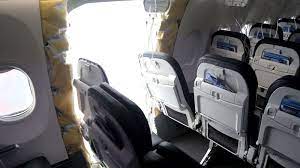Further inspections are being conducted on the 737-900ER, which shares the same door plug design as the MAX 9 aircraft, following inspections that revealed bolt problems.
Following reports of unidentified bolt problems from certain operators, the Federal Aviation Administration (FAA) advised airlines operating Boeing 737-900ER aircraft early on Monday to make sure the parts are securely fastened.
The work was done in response to the mid-air emergency on a crowded Alaska Airlines flight earlier this month, when the door plug came loose and forced 171 737 MAX 9 aircraft to be grounded for inspections.
The door plug design of the 737-900ER is the same.
If carriers decide to install additional seats, it enables the installation of an additional emergency exit door.
The FAA stated in their “Safety Alert for Operators” that all users should “as soon as possible” check the four bolts that secure the door plug to the airframe, as inspections “noted findings with bolts” were found.
Alaska and United are the biggest users of the 737-900ER aircraft, and neither airline anticipates canceling any services as a result of the checks being conducted. This is similar to what happened with the 737 MAX 9s.
In the UK, there are no 737-900ER aircraft in use.
Regarding the FAA alert, a Boeing representative stated, “We fully support the FAA and our customers in this action.”
After two fatal crashes involving MAX variants in 2018 and 2019, the US manufacturer was trying to rebuild confidence when the 737 MAX 9 blowout sparked new worries about safety.
Chief executive of Ryanair, Michael O’Leary, one of Boeing’s biggest European clients, was among industry heavyweights to voice concerns regarding quality control at the manufacturer.
Last week, he assured Sky News that everyone on board its MAX 8 aircraft was safe.
The FAA announced on Wednesday that the first 40 Boeing 737 MAX 9 aircraft inspections had been finished, marking a significant step toward eventually resuming flight operations for the aircraft.
The regulator stated that the MAX 9 will “remain grounded until the FAA is satisfied they are safe to return to service,” but it was also reviewing data from those inspections.







